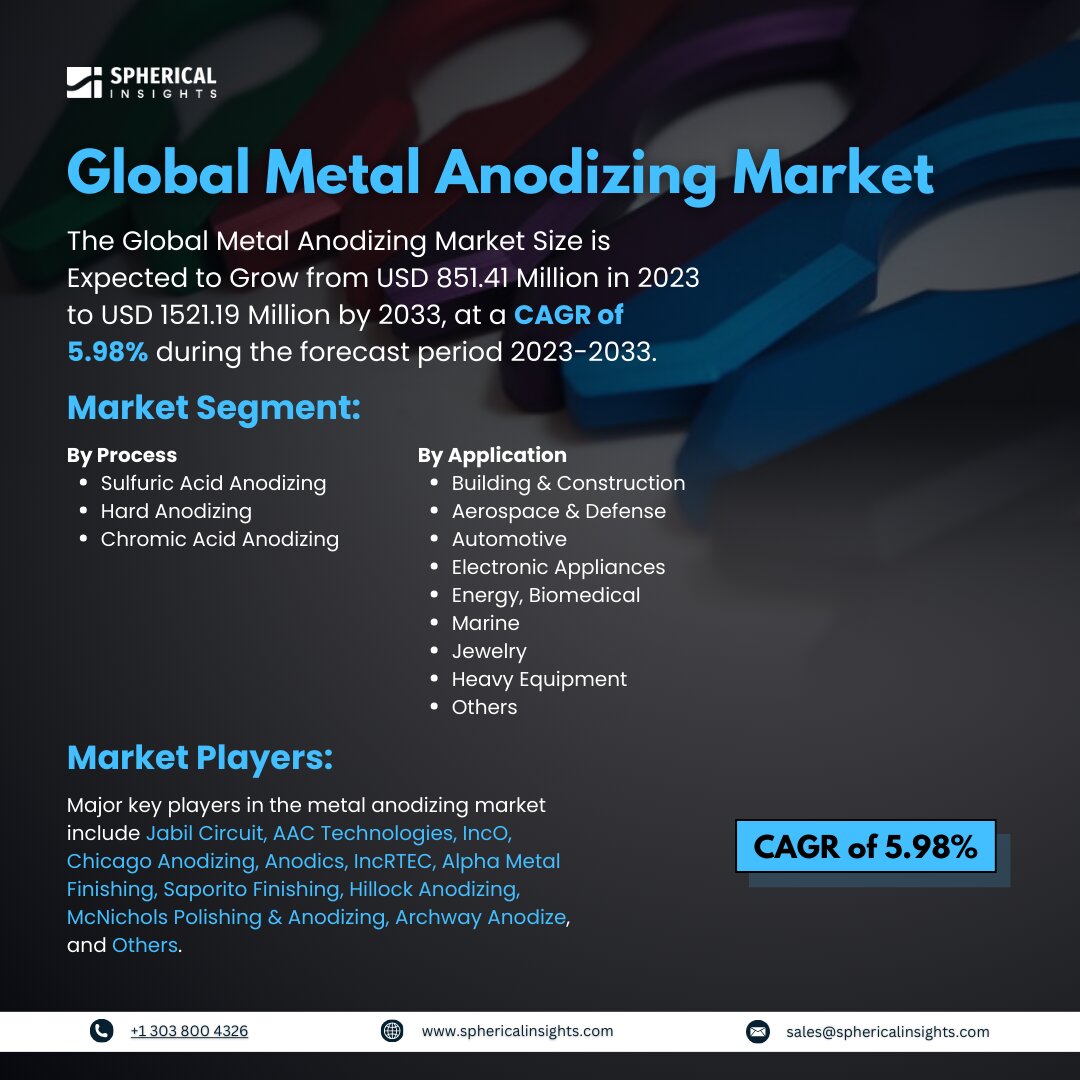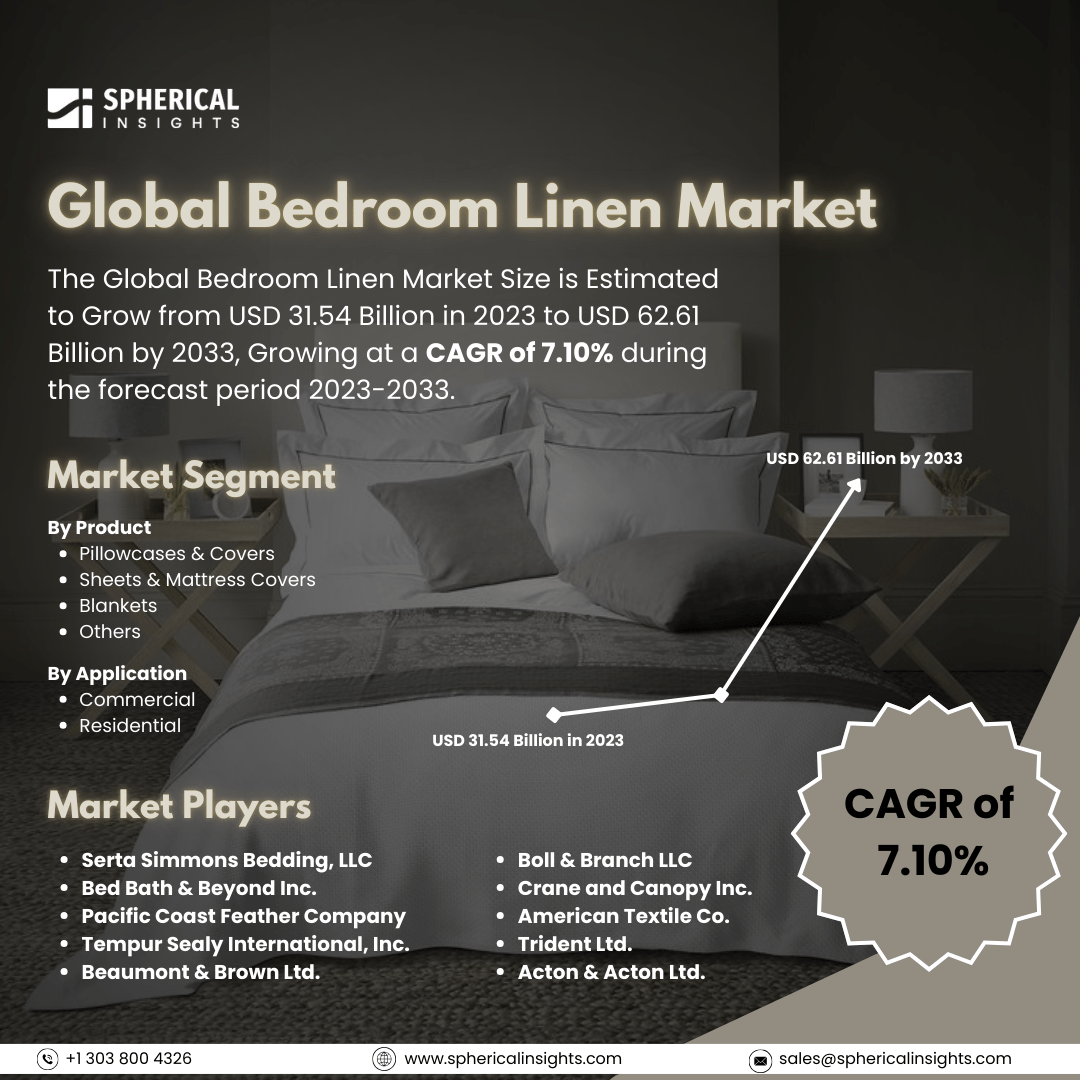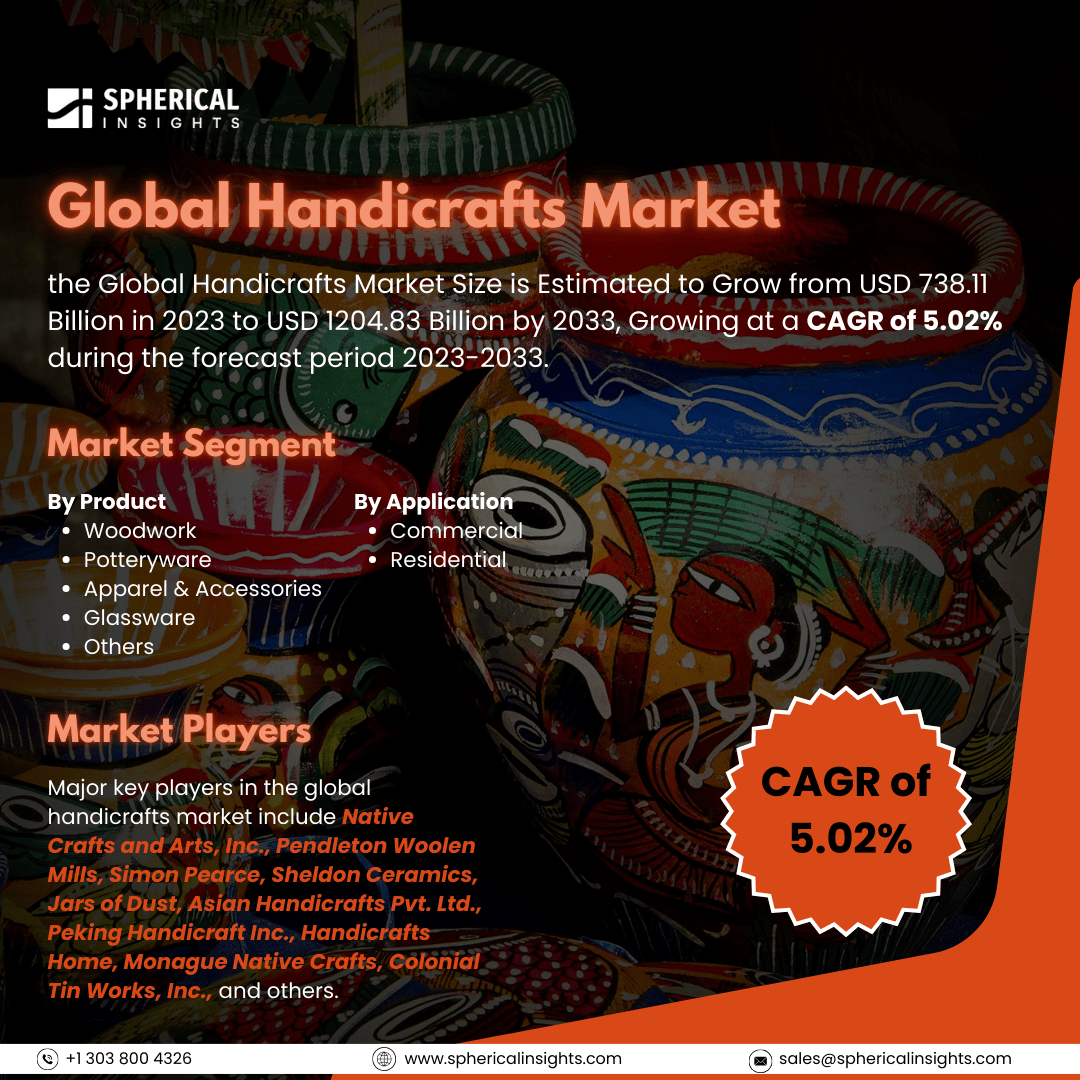Global Metal Anodizing Market Size to worth USD 1521.19 Million by 2033
According to a research report published by Spherical Insights & Consulting, the Global Metal Anodizing Market Size is Expected to Grow from USD 851.41 Million in 2023 to USD 1521.19 Million by 2033, at a CAGR of 5.98% during the forecast period 2023-2033.
Browse key industry insights spread across 210 pages with 110 Market data tables and figures & charts from the report on the Global Metal Anodizing Market Size, Share, and COVID-19 Impact Analysis, By Process (Sulfuric Acid Anodizing, Hard Anodizing, and Chromic Acid Anodizing), By Application (Building & Construction, Aerospace & Defense, Automotive, Electronic Appliances, Energy, Biomedical, Marine, Jewelry, Heavy Equipment, and Others), and By Region (North America, Europe, Asia-Pacific, Latin America, Middle East, and Africa), Analysis and Forecast 2023 – 2033.
The industry that uses an electrochemical procedure to thicken the natural oxide layer on the surface of metal components is known as the metal anodizing market. Along with adding cosmetic enhancements like color and gloss, this procedure increases the metal's resistance to corrosion, wear, and environmental damage. The market serves sectors including aerospace, automotive, electronics, construction, and marine and offers a variety of anodizing techniques, including sulfuric acid anodizing, chromic acid anodizing, and hard anodizing. Metal anodizing is an electrochemical process that transforms metal surfaces into durable, decorative, corrosion-resistant, and anodic oxide finishes, primarily used for improving corrosion resistance on aluminum alloys. Processes include sulfuric acid, hard, and chromic acid anodizing, producing products like anodized aluminum, magnesium, titanium, and zinc. Engine parts, interior components, and external trim are just a few of the automobile applications for anodized metal components. The demand for metal anodizing is being driven by the automobile industry's increasing need for strong, lightweight materials. Anodized metal components are perfect for automobiles since they are stronger and lighter than conventional materials like steel and aluminum. However, the global metal anodizing market growth may be hindered by unfavorable geographic and political conditions, which could affect the overall sales revenue.
The sulfuric acid anodizing segment accounted for the highest share in 2023 and is expected to grow at a significant CAGR during the forecast period.
Based on the process, the metal anodizing market is classified into sulfuric acid anodizing, hard anodizing, and chromic acid anodizing. Among these, the sulfuric acid anodizing segment accounted for the highest share in 2023 and is expected to grow at a significant CAGR during the forecast period. Sulfuric acid is a cost-effective and versatile anodizing method suitable for various industries, including automotive, aerospace, electronics, and construction. It produces a thick, porous oxide layer on aluminum, providing excellent corrosion resistance, and making it a cost-effective option for manufacturers. This versatility makes it ideal for applications where metal components are exposed to harsh environments.
The automotive segment accounted highest share in 2023 and is expected to grow at a significant CAGR during the forecast period.
Based on the application, the metal anodizing market is divided into building & construction, aerospace & defense, automotive, electronic appliances, energy, biomedical, marine, jewelry, heavy equipment, and others. Among these, the automotive segment accounted for the highest share in 2023 and is expected to grow at a significant CAGR during the forecast period. Evidence of the growing tendency in the automotive sector is the rise in global investments aimed at increasing the manufacturing rate of contemporary automobiles, particularly electric cars (EVs).
North America is estimated to hold the largest share of the metal anodizing market over the forecast period.
North America is estimated to hold the largest share of the metal anodizing market over the forecast period. The existence of the large aerospace and automotive industries, which are important consumers of anodized metal components, gives North America a sizable market share.
Asia Pacific is predicted to have the fastest CAGR growth in the metal anodizing market over the forecast period. This is due to rising consumer expenditure in emerging nations like China and India, as well as rapid industrialization and infrastructural development.
Competitive Analysis
Major key players in the metal anodizing market include Jabil Circuit, AAC Technologies, IncO, Chicago Anodizing, Anodics, IncRTEC, Alpha Metal Finishing, Saporito Finishing, Hillock Anodizing, McNichols Polishing & Anodizing, Archway Anodize, and Others.
Recent Development
- In January 2024, a new batch anodizing line was just introduced by Lorin Industries to enhance their current coil anodizing procedure. With this new capability, Lorin can now provide high-quality anodized parts for a range of industries, such as consumer products, automotive, aerospace, and medical devices3. There are numerous standard and bespoke colors available for the batch anodizing process, which offers flexibility for tiny parts and special orders.
Key Target Audience
- Market Players
- Investors
- End-users
- Government Authorities
- Consulting And Research Firm
- Venture capitalists
- Value-Added Resellers (VARs)
Market Segment
This study forecasts revenue at global, regional, and country levels from 2023 to 2033. Spherical Insights has segmented the metal anodizing market based on the below-mentioned segments:
Global Metal Anodizing Market, By Process
- Sulfuric Acid Anodizing
- Hard Anodizing
- Chromic Acid Anodizing
Global Metal Anodizing Market, By Application
- Building & Construction
- Aerospace & Defense
- Automotive
- Electronic Appliances
- Energy, Biomedical
- Marine
- Jewelry
- Heavy Equipment
- Others
Global Metal Anodizing Market, By Regional Analysis
- North America
- Europe
- Germany
- UK
- France
- Italy
- Spain
- Russia
- Rest of Europe
- Asia Pacific
- China
- Japan
- India
- South Korea
- Australia
- Rest of Asia Pacific
- South America
- Brazil
- Argentina
- Rest of South America
- Middle East & Africa
- UAE
- Saudi Arabia
- Qatar
- South Africa
- Rest of the Middle East & Africa



